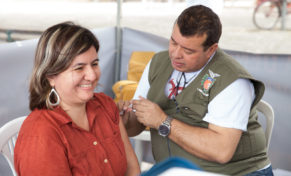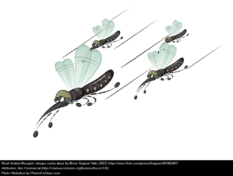- by KRIZETTE CHU
Dengvaxia rollout: full steam ahead, despite challenges
 The Denvaxia rollout continues as more countries around the globe approve the world’s first dengue vaccine.
The Denvaxia rollout continues as more countries around the globe approve the world’s first dengue vaccine.
In April, Argentina and Malaysia joined 14 other countries to have already given the dengue vaccine a green light. A total of 16 countries approved Dengvaxia for rollout to date.
French drugmaker Sanofi Pasteur has focused on the most vulnerable countries, with the goal of getting the product to at least 30 endemic countries before taking the Dengvaxia rollout to more developed regions.
When Dengvaxia was first launched, analysts expected sales to hit 200 million euros by the end of 2016. After all, the dengue vaccine was highly anticipated, took 1.5 billion euros, and nearly 20 years to develop. But, the company pulled in only a quarter of the sales predicted by some forecasters and sales are still lagging.
The culprits? Political and economic turmoil in Latin America and parts of Asia. The Philippines saw a change in administration following the launch of its public health vaccination program against dengue fever. In the Philippines, the vaccine remains widely recommended by pediatricians and is popular in the private market.
Presidential changes in Argentina, Brazil, and Peru followed an overall decline in the region’s economy, and likely slowed the approval and implementation of public health programs.
The Brazilian state of Parana which has seen a three-fold increase in dengue incidence over the last few years made up most of the Dengvaxia sales in 2016.
In Parana, individuals ranging from age 15 to 27 from 30 municipalities were vaccinated against dengue fever in the Parana dengue vaccine program in August of 2016. Heath officials are hoping to see a decrease of 74 percent in cases over the next five years.
The first ever public immunization program was launched in the Philippines in April last year, where close to 600,000 public school students from 6,000 schools received the first dose. According to a study done by the University of the Philippines National Institute of Health, the vaccine program is expected to reduce dengue cases by over 24 percent in the next five years if the vaccination rate is unhampered.
Towards regional mobilization
So far, only the Philippines and Parana have announced public health vaccination programs. Sanofi Pasteur says it expects more regulatory decisions on the vaccine throughout 2017.
At the recent 2nd Asia Dengue Summit, there was a shift for the ASEAN region to move towards regional collaboration. At the conference, chairman of the Global Dengue and Aedes-Transmitted Diseases Consortium Professor Duane Gubler said regional collaboration could work, as it did with the Yellow Fever epidemic that gripped the American region back in 1946. 
“We know that we can do it if we have the dedication and if we use the right approaches,” he said in a panel discussion. “The fact remains that this vaccine if we use it properly, will decrease transmission. It will decrease epidemic activity, decrease the frequency of the epidemic. It’s been shown that it nicely decreases severe disease, it decreases hospitalization and, therefore, it will decrease deaths.”
University of the Philippines College of Medicine’s Dr. Lulu Bravo, addressing the role of politics, said it would be better if lawmakers left the safety surrounding the dengue vaccine and the evaluation of Dengvaxia, to the health experts. “We should not put this in the hands of politicians because the experts and the scientists have already produced the evidence.” Asian Dengue Vaccination Advocacy chairperson Prof. Usa Thisyakorn says, “We did not see any safety concerns. It is safe, so that’s the first key thing. If it’s not safe, then it will not go on and on with any trial.”
Despite all the challenges, regional medical expert Dengue Asia JPAC, Anh Wartel-Tram told Break Dengue, Sanofi Pasteur is running at full capacity. “We produce 100 million doses a year,” she says. “Asia has 70 percent of the dengue burden, which means 1.8 billion people are at risk.”
Addressing the challenges the vaccine has faced, Anh says, “From the company’s perspective, as it is a new vaccine, the challenge really is that we need to have multiple stakeholders in terms of engagement and commitment. We also need to convey the right message to the private and public sectors in understandable and lay language. Bringing this message to the public is essential.”As with most vaccines, it may take a while for results of Dengvaxia’s public vaccination program to show, but some triumphs for the dengue vaccine are now apparent.
As with most vaccines, it may take a while for results of Dengvaxia’s public vaccination program to show, but some triumphs for the dengue vaccine are now apparent. The Philippines’ Central Luzon Department of Health chapter, which ran its third and final round of anti-dengue vaccinations last April, reported to local media that the program saw some 200,000, grade-school students vaccinated from seven provinces. DOH Regional Epidemiology and Surveillance Unit Head Jessie Fantone says that since the first immunization reported cases fell 50 percent.
While the Dengnvaxia story is taking a little longer to unfold than might have been expected, successful rollout in the Philippines and Parana, Brazil, set the stage for wider adoption.
—
Did someone you know get dengue? Click below to report the incidence to Dengue Track.

